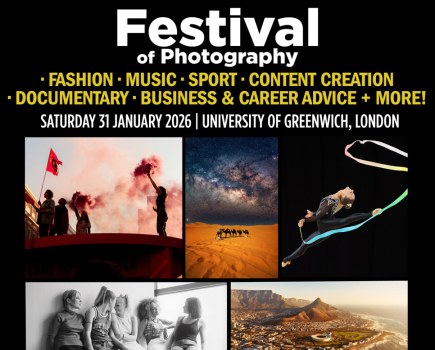Ever since the dawn of photography, people have been trying to figure out exactly what photography is and what it is for. Is it an art, strongly influenced by the aesthetics of painting? A science, based on logical compositional and exposure principles, and the alchemy of darkroom chemicals or data whizzing between sensor and processor? A tool to help change the world? And is the job of the photographer strictly to record the world as seen through their lens, or interpret it in a more subjective way that is based on how they are thinking or feeling? These are big questions indeed.
More recently, there’s been a lot of interest in the healing, therapeutic power of photography – how taking pictures can help you to be happier and cope better with life’s challenges, regardless of whether your photo wins a competition or gets lots of social media likes. We talk to a variety of photographers – some pro, some amateur – to find out how photography has helped them through tough times.

A hare suckling its leverets at dusk, photographed with the Olympus E-M1X. Credit: Andrew Fusek Peters
Coping with the big C
Andrew Fusek Peters is a freelance landscape/wildlife photographer whose articles and images regularly appear in photo magazines (including AP) and the national press; he’s also reached the top in a lot of competitions. Last year was a difficult one for Andrew, as a bout of tiredness and anaemia turned out to be caused by aggressive bowel cancer. While a lot of photographers might have hung up their cameras while they got through the gruelling chemotherapy, this was never an option for Andrew.
‘The diagnosis meant I couldn’t travel abroad, but I tend to focus on areas local to me, such as Long Mynd in Shropshire,’ he explains. ‘I recently found myself lying next to a bog pool on Long Mynd trying to capture the frogspawn with my underwater camera and I realised how happy and content I was, not thinking about the chemotherapy or my prognosis. Here I was in the real world, out in nature, an escape from everything going on at the moment, including all the ugly Brexit politics. Here was a place where frogs, birds are doing their thing, and I thought, hey, it’s pretty good stuff this photography lark.’
So for Andrew, photography has been a welcome distraction, and even when he’s been too weak from treatment to go outdoors, he’s used the time to sort out his extensive back catalogue, enter competitions or pitch ideas to editors. ‘It seems strange – as I moved to having the operation and beyond, amazing photographic opportunities seemed to arise, such as particularly stunning dawns or beautiful butterflies appearing in my garden. I wouldn’t recommend getting cancer, but as a photographer, it’s not been all bad.’
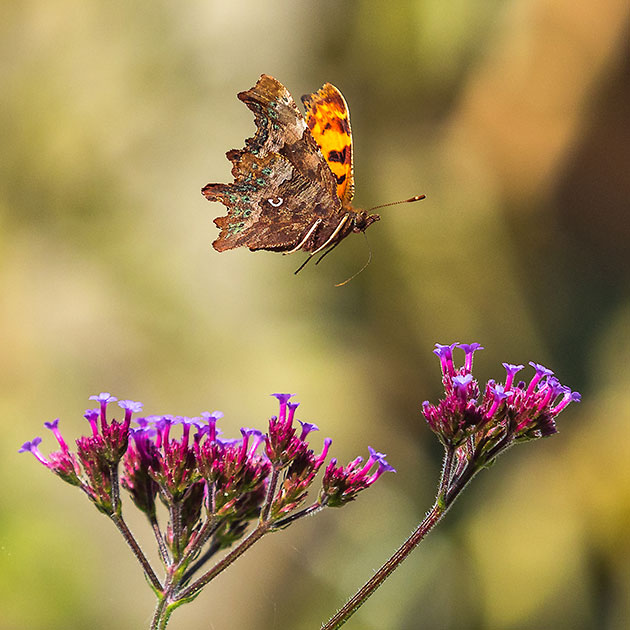
Andrew used the Olympus ProCapture feature to get this Comma Butterfly flight shot in his garden. Credit: Andrew Fusek Peters
Andrew reckons the inevitable compromises and limitations imposed by his illness have also changed the way he takes photographs. ‘I now look at the whole frame more. So many wildlife photographers just try to get the thing they are trying to shoot. What is the frame around the thing? What is the whole picture? So I became interested in the minutiae of backgrounds and beauty. Because I was limited in what I could do, I suddenly found myself doing more work in commercial gardens, and with insects, butterflies and bees. My lightweight Olympus kit was easier to carry around and I found myself doing stuff I hadn’t seen other photographers doing. I have found a whole new level of interest in garden photography.’
This is not to say, however, that Andrew minimises how hard it is for him at the moment. He says, ‘A serious illness is a serious illness, and on bad days you’ll find me reading a book or resting. I do what I can, but when you are really ill, you are just ill.’
So what advice does Andrew have for photographers facing major health issues such as cancer? ‘On days when you are feeling better try to get out in nature doing the things you love. You may be able to forget your illness for a couple of hours, and maybe this helps with the healing process. You are looking out at the world and this takes you away from yourself – which has to be a good thing.’
See andrewfusekpeters.com for more
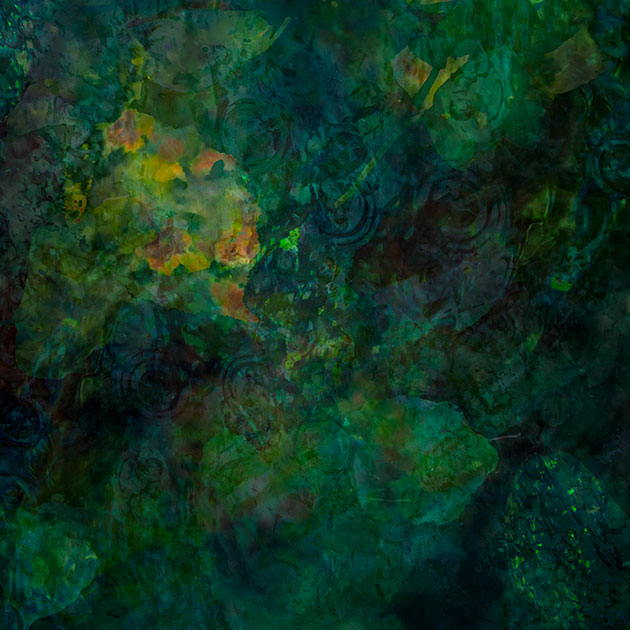
‘A multiple exposure image made in Giverny, France, following in Monet’s footsteps – looking for peace’. Credit: Doug Chinnery
Easing mental anguish
Doug Chinnery is well known as a professional landscape/fine-art photographer and workshop leader. Less well known are his struggles with stress and anxiety, which he bravely talks about here, and his subsequent discovery of the healing power of photography. ‘I had a nervous breakdown last April, which was the result of extreme stress over a long period in various areas of my life,’ Doug reveals. ‘I hadn’t suffered with anxiety or depression before, so its effects have been difficult for me to cope with. In addition to medication, psychiatric help and lifestyle changes, I naturally turned to my photography in an effort to find relief.’
Even for a seasoned pro such as Doug, this wasn’t easy at the beginning. ‘I was in a very bleak place and thinking about anything in a concentrated way was very hard for me. However, as the medication began to work I found I was able to start to focus again on art and creativity. Indeed, it was at this point that I decided to approach Kozu Books with my idea of making a publication based on my output for 12 months following the breakdown. I was interested to see how my mental state might affect my work. It would force me to get out with my camera.’
Doug assumed the early images would be bleak and dark, becoming brighter and more optimistic as he healed. ‘In this I was very wrong. It soon became apparent to me that making my images was a real refuge from my mental issues – a true escape. For those minutes and hours where I concentrated hard on the photography, I was largely released from the influences of that dark part of my mind that had been dominating. My work was simply a reflection of the location or subject – how beautiful it was, not of how anxious or depressed I was (or wasn’t) that particular day. So now, as I write this, just as we are doing the final editing of the book, I find that it is full of colour and hope. Yes, there are darker works in there, but I think this is more because the subject matter was inclined this way – but perhaps at times the “black dog” did influence what I made.’
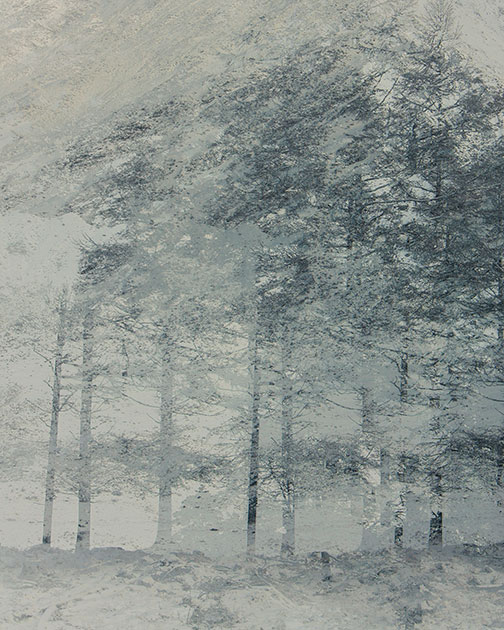
‘An image made in a blizzard at the foot of Glencoe, losing myself in abstracting the landscape’. Credit: Doug Chinnery
As a professional photographer and course leader, Doug has little time to go off and make personal work. ‘Most of what I do is snatched minutes on tours when the clients are all busy making their own images. But just being with like-minded people and immersing myself in that creative atmosphere with them is very therapeutic… I firmly believe all of us have the ability to make art. The camera opens up the world of creative expression and I have found the perfect medium to express myself with. It matters not whether anyone else likes the images.’
Doug’s last piece of advice to anyone who is facing similar challenges is simply to hang in there. ‘If any of your readers are feeling utterly hopeless and are feeling like putting the gear in the loft and curling up in a ball, I understand that. But it will pass, and if you can just bring yourself to raise the camera to your eye and press the shutter, it is a defiant act – an act which says you will not give up. This thing will not beat nor define you. Just don’t give up; do what you can when you can and the light will return. Making art is more powerful than many people give it credit for.’
Find out more about Doug’s new book Abstract Mindedness.
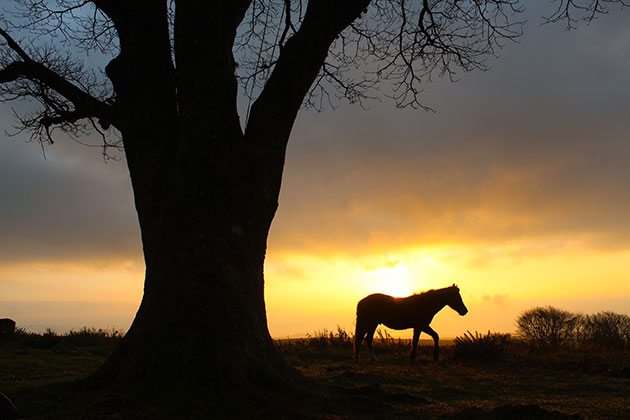
Pony Silhouette. ‘I find ponies to be very calming, and photographing them is a pleasure’. Credit: Joe James
Autism and photography: made for each other
According to the NHS, autism is a lifelong condition that affects how people communicate and interact with others. As you can imagine, this causes a lot of anxiety-related problems for autistic people when dealing with an often-uncomprehending society. Joe James only discovered he was autistic five years ago, but soon found photography to be hugely helpful with his condition. ‘My wife and I were watching a TV show about kids on the spectrum, and she recognised a lot of the traits in me. I dismissed it, but when I took a test it showed she was correct. I went to the doctor and then the mental health clinic from there, where I had an interview and was diagnosed. It really helped me understand why I had never really seemed to fit in. I’m a Lego piece in a Meccano world.’
So how does photography help a person with this complicated and still-misunderstood condition? ‘By providing escapism when my anxiety levels are high,’ Joe explains. ‘Last year I slipped into depression and found the only thing that made me happy was going for walks with my family and dogs and escaping into the countryside. I’ve always liked taking photos but never really took it seriously. My friends said I was good, so last September I bought a Canon EOS 400D. It was a game-changer compared to my phone, and I enjoyed being out taking photos or editing them at home, while listening to music. It relaxed me so much. Also I was isolated and bullied as a child, and the countryside was the only place I felt happy. It’s why taking photos of nature and looking at them calms me when I get anxious and the world gets a bit too much.’
On a deeper level, Joe believes that autism and photography seem to be made for each other. ‘I believe that autism is a superpower and each of us on the spectrum have special abilities, even though life is hard. My most useful “superpower” is my ability to learn vast amounts of information in great detail, incredibly quickly. I watched one video on how light can help with making a photograph better and the same day I went out and took a photo of some ponies surrounding a tree that has proved to be very popular. I also picked up photo editing by troubleshooting and editing images over and over again. I believe that autism gives me a unique perspective when taking photographs, as we on the autism spectrum see the world in great detail. It’s called tree learning. “Neuro-typical” people see a forest and tell themselves it’s a forest. We see a group of trees, and then only after we have counted and studied every tree, can we accept that it’s a forest.’

‘Pony Heaven. My first shot taken after learning how light can change pictures’. Credit: Joe James
Joe also battles with attention deficit disorder (ADHD), which means he doesn’t like staying still or in one place for too long. ‘Photography is great at getting me out and about to take pictures, but I’ve never thought of a single shot and going to a location to take it. I just run around the countryside taking photos of everything I like looking at.’
Despite the misunderstandings surrounding autism, Joe’s openness about his condition on social media has generated a sizeable fan club. ‘When people liked my photos and I told them I was autistic, the response was so overwhelmingly positive that my depression disappeared overnight. I had so many messages from people thanking me for sharing my story with them. They in turn opened up to me. The whole experience is like therapy and my photos, alongside my poems and words expressing my feelings about my autism, seems to be inspiring and helpful to so many people. I even started doing photography trips for kids on the spectrum and their families (free of charge), to show the next generation how helpful photography is for us. There is only positivity and happiness when bottling memories’.
Joe is on Facebook at Joe James Autistic Photography.
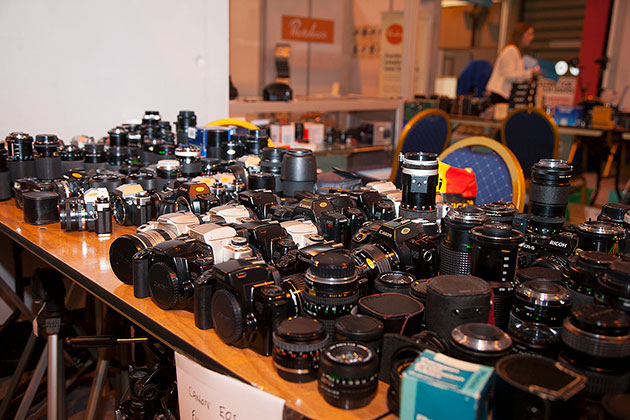
The DPS’s used gear stand is a big highlight of The Photography Show. Credit: Disabled Photographers’ Society
Building a better society
If you’re a photographer facing mental or physical challenges, it can be isolating, so we’re very lucky in the UK to have the Disabled Photographers’ Society, or DPS. This registered charity, set up over 50 years ago, exists to support photographers with a range of disabilities and provides free technical support, including advice on camera modifications.
Their exhibition secretary, Agi Ch, knows how therapeutic photography can be. ‘I used to do a lot of freelance commercial photography but I have a genetic kidney disease which has been getting worse recently. I got involved with the DPS by chance and I soon realised it was more than a camera club, as it was making a real change to people’s lives. Becoming a member, and then exhibitions secretary, really helped me through a recent bout of serious depression and suicidal thoughts, particularly as I had to organise the 50th anniversary exhibition – I couldn’t let people down, and it gave me focus. The DPS literally saved my life.’ Agi’s disability is not immediately obvious, so she’s keen to stress how inclusive and open minded the DPS is. ‘We are for any disability. The last couple of years have seen membership grow, and we are keen to attract younger people.’






